
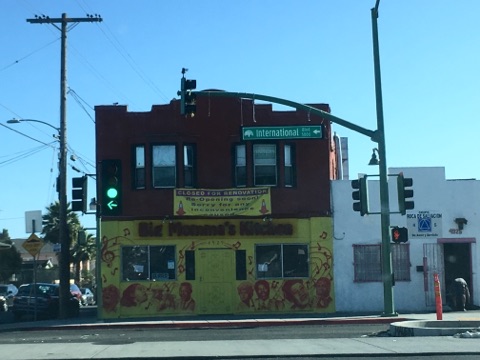
By Hannah Moore…
East Oakland now is fresh tamales on the corner on your way to work. East Oakland is the woman selling tamales who tells you about her son in El Salvador and how he is getting sick and she will soon need to go back and see him. East Oakland now is the struggle between deep-rooted cultural practices that conjure up healing and the new age Christopher Columbus mindset that rests on the complete disregard for the culture, community and resources of a place and a people.
East Oakland now is young men hitting donuts on the corner while OPD’ officers dip donuts in their coffee, targeting Black and Brown bodies from patrol cars. East Oakland is taco’s and tortas and pho and ribs and kids laughing on their bikes with spokes covered in bright colors. Scraper bikes, scraper cars shinning bright. East Oakland is also deep -seated scars.
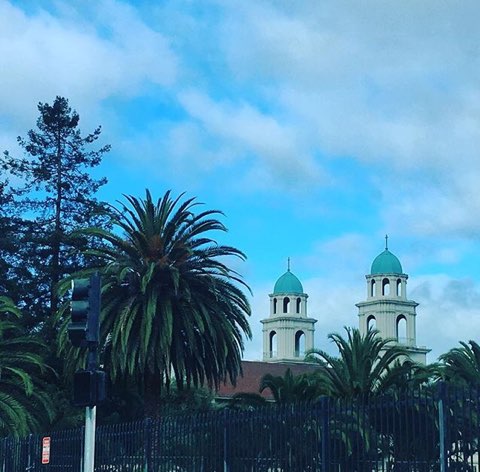 East Oakland is proud. East Oakland knows how to celebrate. East Oakland is a sacred jewel being yet again re-discovered. East Oakland is an elaborate system of creeks. East Oakland is huge nopales and palm trees. East Oakland now is unaffordable rent and villages of tents.
East Oakland is proud. East Oakland knows how to celebrate. East Oakland is a sacred jewel being yet again re-discovered. East Oakland is an elaborate system of creeks. East Oakland is huge nopales and palm trees. East Oakland now is unaffordable rent and villages of tents.
What is East Oakland Now, as told by two fierce Xingonas from the Town
Through the interviews of Marisol and Lizbeth, two fierce and gentle warriors from East Oakland who’s journey is in doing the work for justice, culture and healing, we are reminded that East Oakland is a precious stone. That East Oakland is a place with deep- rooted culture. East Oakland is a place where families with different cultural backgrounds have made their home for generation after generation, creating a vibrant mix of foods, music and tradition.
East Oakland is resilient, and proud and celebrates hard. East Oakland is a flavor all its own, and when traveling out side of the Town you can quickly spot someone else from East Oakland. The connection is visceral. Despite the change in the last 10 years and the pushing out of East Oakland families and the moving in of new folks through gentrification, East Oakland remains resilient.
In the words of Lizbeth, “We will not be moved.” East Oakland is rooted and full of community folks, organizations and leaders working to make sure issues of police violence, housing, food access are fought for. The fight continues and the love and respect that is in the heart of East Oakland shines bright.
——————————————————————————————————————————
By Ryan Barba
What is East Oakland now? A simple question with many very different answers.
My first interview was with 32- year -old, Zack Okada who has been living in the San Antonio district for the last 15 years.
“My neighborhood is gentrifying its diversity to having just middle- class white people. The only benefit is when the police are called, they now respond immediately. I don’t like the drastic change in color and am sick and tired of the large amounts of homeless people inhabiting the sidewalks, parks and other areas. I do feel a lot safer as opposed to two to three years ago. I can go for a walk at night and not have to constantly look behind my back, except near homeless encampments. I do and don’t like what I’m seeing, but the future looks bright in my neighborhood.”
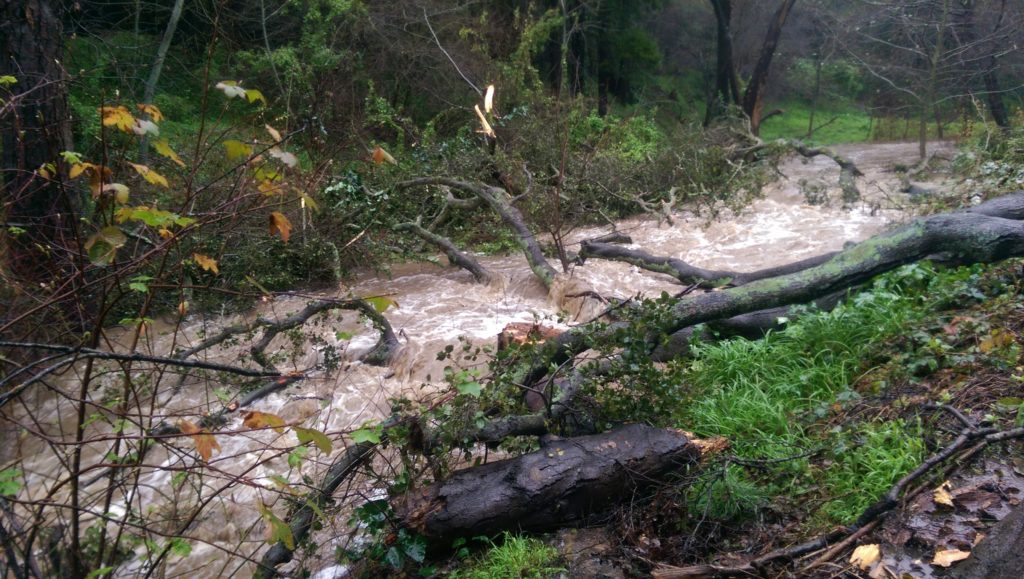 I next interviewed my friend Danny Wu who has spent his entire life in East Oakland and resides in Eastlake.
I next interviewed my friend Danny Wu who has spent his entire life in East Oakland and resides in Eastlake.
“What I’ve noticed is that East Oakland now is a more inclusive setting. Over the past six years, members of the LGBTQ community have moved into my neighborhood. The change has been very welcomed. On the negative, everything around here has gotten a lot more expensive. The high costs have pushed numerous amounts of my neighbors out who couldn’t afford to live here anymore. Also there are a lot more homeless people living in the area, on the sidewalks and in the parks.”
Third, I spoke with Lou Caprisun, who has spent 34 years in East Oakland with his fondest memories being in the Dimond District.
“I spent a lot of my life in the Dimond District and have plenty of great memories there. I have two generations of family that have spent their elementary school years playing and making friends at Dimond Park and hopefully the third generation will be able to do the same.”
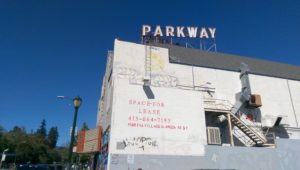 The fourth interview was with Nick Sanchez who has lived in East Oakland for over 50 years and spends time in the Fruitvale District.
The fourth interview was with Nick Sanchez who has lived in East Oakland for over 50 years and spends time in the Fruitvale District.
“When I was younger, my friends and I would get together and go play ball instead of getting into trouble because we had sports as a past time. Today ball fields and playgrounds are locked up, which doesn’t give kids today as much to do. I am also noticing a lot more Caucasians and fewer minorities living in the area. Not trying to sound prejudicial, but that’s sending a message that a lot of minorities were causing the problems in East Oakland over the last 25 years. It was nice in the 60’s and 70’s, in the 80’s and 90’s it was deteriorating, in the last 10- plus years it’s been starting to get better again.”
 My final interview was with my friend Manny Lee who has decades worth of experience in East Oakland and grew up in Brookfield Village.
My final interview was with my friend Manny Lee who has decades worth of experience in East Oakland and grew up in Brookfield Village.
“Over the past half century Oakland has changed for the worse. Good paying manufacturing jobs (Del Monte Cannery, General Motors, Mother’s Cookies, Kilpatrick’s Bread, Granny Goose Foods and so many others) have all disappeared being replaced by hi-tech jobs, leaving those without a higher education joblessness, unemployment, desperation and more crime. With regentrification, the few people left from my generation remaining are all but being pushed out. With home prices, property values and rents skyrocketing – it is only good for investors, not the ordinary person trying to raise a family. In short, Oakland will become home for the affluent middle class who cannot afford to live on the other side of the Bay – San Francisco.”
Here is a brief poem that I have written.
What Is East Oakland Now?
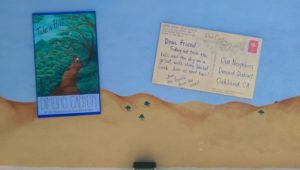 East Oakland today is a very complicated structure that is seeing both positive and negative changes that are redesigning its image and direction towards the foreseeable future. It is a fall from grace, decline in race, disgusting taste, misguided place. Changes in culture, ethnicity and demographics, becoming a kingdom that most can’t afford to inhabit. There is a rise in positivity toward safety, some areas of cleanliness and some inclusion but if you are not a part of those select high income places it is most certainly an illusion. It is a struggle to get along with so many things that are going wrong, being pushed out of your home into a place all alone, it can be out of this city or state or a part of the streets that are conducting misery, misfortune and hate. These times are very tough, crippling and rough, lost in the direction of money- filled perceptions. What is East Oakland now is more than just a question, it is a call to action that requires your much needed attention.
East Oakland today is a very complicated structure that is seeing both positive and negative changes that are redesigning its image and direction towards the foreseeable future. It is a fall from grace, decline in race, disgusting taste, misguided place. Changes in culture, ethnicity and demographics, becoming a kingdom that most can’t afford to inhabit. There is a rise in positivity toward safety, some areas of cleanliness and some inclusion but if you are not a part of those select high income places it is most certainly an illusion. It is a struggle to get along with so many things that are going wrong, being pushed out of your home into a place all alone, it can be out of this city or state or a part of the streets that are conducting misery, misfortune and hate. These times are very tough, crippling and rough, lost in the direction of money- filled perceptions. What is East Oakland now is more than just a question, it is a call to action that requires your much needed attention.
——————————————————————————————————————————
By Kevonna Taylor
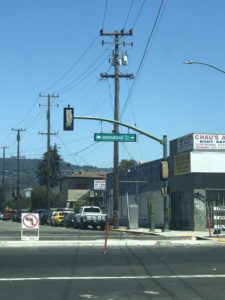 What is East Oakland you may ask? East Oakland is a town within the city of Oakland. Oakland being the heart of the Bay, also known across the state as “The Town.” East Oakland is from Lake Merritt in the northwest and to the beginning of San Leandro in the southeast. East Oakland, known to many of us as the “East,” is mostly an African- American community. Back in the 90’s, over 50 percent of residents were African American. “OakTown” has a birthed a number of rappers and singers, such as Raphael Saadiq, Keak da Sneak, Dru Down, Too Short, Digital Underground, MC Hammer, Luniz, Keyshia Cole, Philthy Rich. Also plenty of great artists have came from East Oakland from the young, and the old. We created our own new sound giving birth to the hip hop sound known as Mobb music.
What is East Oakland you may ask? East Oakland is a town within the city of Oakland. Oakland being the heart of the Bay, also known across the state as “The Town.” East Oakland is from Lake Merritt in the northwest and to the beginning of San Leandro in the southeast. East Oakland, known to many of us as the “East,” is mostly an African- American community. Back in the 90’s, over 50 percent of residents were African American. “OakTown” has a birthed a number of rappers and singers, such as Raphael Saadiq, Keak da Sneak, Dru Down, Too Short, Digital Underground, MC Hammer, Luniz, Keyshia Cole, Philthy Rich. Also plenty of great artists have came from East Oakland from the young, and the old. We created our own new sound giving birth to the hip hop sound known as Mobb music.
 Certain parts of the East have different names – Seminary, Lockwood, Brookfield, Havenscourt, Hegenberger, and the Eastmont area. Oakland has always had style, culture, and you can still find some great authentic soul food restaurants.
Certain parts of the East have different names – Seminary, Lockwood, Brookfield, Havenscourt, Hegenberger, and the Eastmont area. Oakland has always had style, culture, and you can still find some great authentic soul food restaurants.
Now back to my title, “What Is East Oakland Now” you might ask.
As of 2014 there are more whites than blacks living here now. It is 34.5 percent white to 28 percent African American. Would you believe that? East Oakland to me, and others around me, is losing its richness, what made so us, what made its own culture. We had our own businesses, stores, music, clothes, schools, and artifacts, parks, and painting murals.
 Well after six interviews with African Americans who first moved back here in the 70’s, and 80’s and early 90’s, it is not the same town as when they grew up. They feel white people want to take over and change our culture.
Well after six interviews with African Americans who first moved back here in the 70’s, and 80’s and early 90’s, it is not the same town as when they grew up. They feel white people want to take over and change our culture.
“When I was coming up Black People ran this,” said Simmone Sims, 45, a longtime East Oakland resident. “This was our town; we made our own ways. We hang together and stuck together. We went to school and of course it was predominately black. We had African- American teachers who taught us real history. Not this fake white history that they flooding, and brainwashing the kids with today, to make us forget about how rich, and important our culture is.”
 I also spoke with elderly longtime East Oakland resident, Bryan Adams, who has lived in Lockwood for over 40 years. “I been here so many years, I have witnessed the Oakland riots to Oakland parades. I remember the days of Mac Dre, and the Oakland Raiders. Everybody Know Oakland loves the Raiders, then what they do? They wanna take it away. We love the Warriors they wanna move them to the white part of the Bay. Raiders, what they do? Up, and move them to the white people of America.”
I also spoke with elderly longtime East Oakland resident, Bryan Adams, who has lived in Lockwood for over 40 years. “I been here so many years, I have witnessed the Oakland riots to Oakland parades. I remember the days of Mac Dre, and the Oakland Raiders. Everybody Know Oakland loves the Raiders, then what they do? They wanna take it away. We love the Warriors they wanna move them to the white part of the Bay. Raiders, what they do? Up, and move them to the white people of America.”
If you noticed, East Oakland has become populated with white people over the last 10 years. They want to take over, and move us out.
They spend so much of our tax money fixing things in the nicer parts of the city, instead of fixing messed up roads in the East. My biggest thing or message I want to send, is stop trying to take, and help instead. Restore the school, fix our roads, and streets, and give money to black businesses.
 If you are an African American reading this ,and are over 30, I want you to look around. Ask yourself, and really evaluate “How has East Oakland changed”?
If you are an African American reading this ,and are over 30, I want you to look around. Ask yourself, and really evaluate “How has East Oakland changed”?
As a disclaimer, in no way am I prejudiced. I love all colors, shapes, and sizes. After interviewing, and looking through African American history, I realize that my culture and city are important to me. It is our birthplace, our home, back in the day we crafted and created most of the city. East Oakland/Oakland is History.
——————————————————————————————————
By Tonya Shipp
Being that I was homeless, unemployed or underemployed and without full health coverage for 10-plus years, for the last three years, East Oakland has been home to me. And home to me means family and raising healthy children to be productive members of society. This includes preparing and eating nutritious food, spending quality time together in a safe environment.

I appreciate the good weather and the beautiful creeks. However, my neighborhood block appears to be a “hot spot.” There’s a lot of violence, ignorant behavior and bad manners exhibited with verbal and physical altercations, even murder! From loud talking at all times of the day and homeless sleeping in cars and public excretion to dumping and littering and excessive loitering.
I spend a lot of time at Sparkpoint Centers, The Career Center and the library. Unable to afford a computer, they’ve been a blessing to me. I apply for jobs, take courses, obtain copies of my credit report, pay bills and online bank.
East Oakland means lifestyle. I’ve been able to volunteer at The Food Bank, Unity Council and Hieroglyphics Imperium to keep busy and keep up my job skills in between jobs. East Oakland also means diversity and inclusion, growth, as people from all over the world have made Oakland home.
I interviewed random people in the East Oakland community about what East Oakland is to them. Below is a summary of the comments of Mason, Anthony, Avraham, So and Will.

Mason of Maria’s Market and Deli said he’s been in business since 1999, he loves everybody and Oakland and love him. Anthony, a turf dance teacher born and raised in Oakland, also loves it but mentioned gentrification.

Avraham, an immigrant from Israel , spoke about immigrants working hard and not accepting government hand-outs. He also spoke about vandalism in East Oakland. Avraham said we should all work together to bring change and stop abusing drugs and alcohol because it suppresses people, no longer focusing on community.
Son Ho has been in East Oakland off and on for 30 years He’s had his own business off and on. He’s noticed the change in traffic that has drastically changed from Black to more Asians and Whites. He said it was 65 percent Black in the early ‘80s and they say it was the bad years due to the dope, but Black people were patronizing Blacks very heavily, spending money with Black people. They shut it down so it’s really hard to try to find our Black businesses opening in Oakland to get the support.
Will talked about violence and witnessing a lot of crime when he was growing up as a child. He has seen a lot of people get shot, murdered, robbed and it’s still the same as it was 10 years ago. Once he talked with a cop who asked him how to stop the violence. He told him that it comes from the house. If you want to stop the violence,, he said, you have to approach the parents, that’s where the violence comes from in Oakland, the parents. They’re not raising their kids right. And that’s why we see the crime including drugs, prostitution in the street. They were raised like that and they think it’s okay. And plus no one has told them that that’s not right.
By Patricia Contreras-Flores
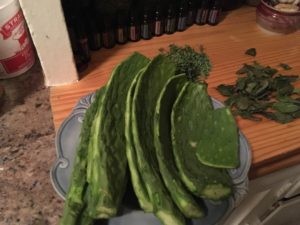 East Oakland is home to so many people. And with the ever changing landscape folks that I talk to looked to their past to describe a present that both challenges and continues to inspire them.
East Oakland is home to so many people. And with the ever changing landscape folks that I talk to looked to their past to describe a present that both challenges and continues to inspire them.
East Oakland to me is my first campaign, blocks of folks living in community.
East Oakland is the Lacey family who helped Brookfield village back in the 1940’s become more inclusive.
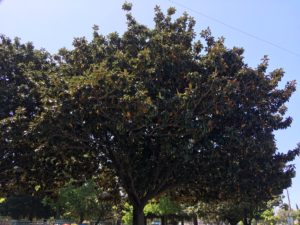 East Oakland is the Black Panthers Freedom School, Too Short and Sheila E.
East Oakland is the Black Panthers Freedom School, Too Short and Sheila E.
East Oakland is the hope and the fierce power of all the ancestors.
Guillermo Carrillo is fourth generation East Oaklander who claims East Oakland first and foremost when identifying. It is home to him. Despite what has and is said about Oakland, Guillermo is there to check people about any shitty generalizations they have about his town. He understands that people living in poverty must do so many things to get by and folks must not be judged because of these choices. Going to UC Santa Cruz strengthened his pride in East Oakland on some cosmic level. He wants to always live in East Oakland and imagines himself as an old man living in the hood his ancestors have called home for quite a while.
 John Jones III was born and raised in East Oakland. He is the story teller of Oakland and has so many to share. He recalls an East Oakland that had thriving Black- owned businesses that were foundational to the community he was a part of. An ice cream shop that would give him and his friends the sugary goodness when the containers got down low. He invoked Gertrude Stein’s famous line about Oakland “there is no there there” to describe how much everything has changed. From his elementary school that no longer exists, to Black- owned businesses that are all shuttered and vacant to the lack of activities and spaces for youth.
John Jones III was born and raised in East Oakland. He is the story teller of Oakland and has so many to share. He recalls an East Oakland that had thriving Black- owned businesses that were foundational to the community he was a part of. An ice cream shop that would give him and his friends the sugary goodness when the containers got down low. He invoked Gertrude Stein’s famous line about Oakland “there is no there there” to describe how much everything has changed. From his elementary school that no longer exists, to Black- owned businesses that are all shuttered and vacant to the lack of activities and spaces for youth.
Nehanda Imara has spent several decades in East Oakland and raised her daughter here. She recalls giving birth to her at Highland hospital, her first pre-school and the various cultural events that have been so essential to the community. She also shares how her neighborhood-Brookfield Village-has changed since she moved into it. Nehanda shared that she still feels hope for Oakland and does her part to cultivate hope as well.
By Eduardo Jimenez
To talk about what East Oakland is now, we have to talk about what East Oakland was before. As department stores in Eastmont Mall, car dealerships along East 14th Avenue and the canneries along the estuary left, they were replaced not by other businesses but with families, workers, artists, and entrepreneurs from all around the world.
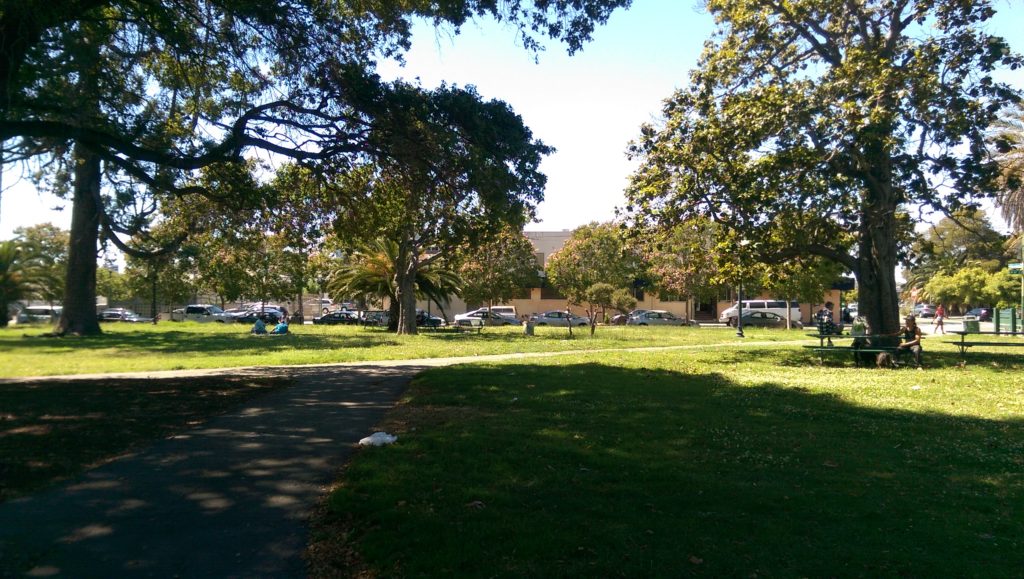 Then as the Loma Prieta Earthquake and the Oakland Hills Fire left Oakland’s economy on life support, those outsiders filled the void until when we thought help would eventually arrive: it never did.
Then as the Loma Prieta Earthquake and the Oakland Hills Fire left Oakland’s economy on life support, those outsiders filled the void until when we thought help would eventually arrive: it never did.
But it feels as if overnight the hustle to survive and possibly get out of here has been replaced with the hustle to just pay rent. The flood of outside homebuyers and renters has forced many native Oaklanders to flee. As many of us fought to shape East Oakland in the image of our struggle and our cultures, we are now holding on by our fingernails. And even as the economy has gotten better, the help is still not on the way and we are realizing that it might never arrive.
 Projects like Oakland Voices and Red Bay Coffee are filling-in this void and are starting to give East Oaklanders who need a voice because they have a story to tell.
Projects like Oakland Voices and Red Bay Coffee are filling-in this void and are starting to give East Oaklanders who need a voice because they have a story to tell.
But don’t pity East Oaklanders. We will thrive and we will survive, again, by doing what we do best; raging and protesting, redesigning and creating, and we will reclaim East Oakland back for the families, artists, and entrepreneurs that made East Oakland one of the most fascinating places to live.
Please see the links in the byline above the story for more information about the authors of this articles.

I love the optimistic conclusion! East Oaklanders will have a bright future, I am absolutely sure of it 🙂
What is East Oakland you may ask? East Oakland is a town within the city of Oakland. this is very informative) lol